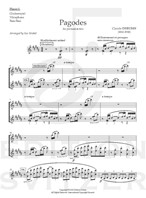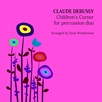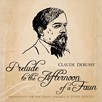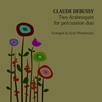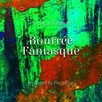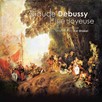
Pagodes
Composer: Claude Debussy / arr. Kai Strobel
Instrument: Percussion Trio
Level: Intermediate/Advanced
Published: 2020
Price: €38.00
Item details
-
Description +
-
Duration: 7 min.
Arranged by Kai Strobel
_______
In honor of the 100th anniversary of Claude Debussy's death in 2018, I decided to arrange a selection of piano pieces for Marimba, Vibraphone, and other Idiophonic instruments. Transforming these musical works to modern percussion instruments awakened my curiosity. It provides a well-fitting framework for Debussy's fundamental compositional idea and his source of inspiration: traditional Asian percussion music. Debussy developed an individual musical language inspired by a Gamelan Orchestra, which he was introduced to at the World Exhibition in Paris in 1889. Including exotic gamelan elements in the composition, multiple uses of pentatonic, hexatonic and heptatonic scales as well as structural elements like the imitation of low gongs illustrate the Asian influences.
The Suite Estampes, in particular, its first movement Pagodes which Claude Debussy composed in 1903 encloses these ideas. As one of the most famous classical pianos works by the French composer, the colorful nature of this piece is intriguing. When I decided to arrange it, I choose Instruments which both implement the sound spectrum of the Piano and relate to the origin of Gamelan, e.g. reusing elements such as low gongs for the pieces fundament as well as Cencerros and Crotales as a recollection of themetallic Gamelan sound. Furthermore, the Marimba and Vibraphone are playing a major part in the piece, enhancing it with its warm Bass and brilliant resonant Tenor Sound.
Kai Strobel
-
-
Instrumentation +
-
Instrumental Requirements
Player 1
Glockenspiel
Vibraphone (4.0 Octave)
Tam-Tam
Player 2
Crotales (c#', d#', f#', g#', h', c#'', d#'')
Cencerros (g#, a#, h, c#', d#', f#', g#', h')
Vibraphone (3.0 Octave)
Tuned Gongs (F#, H, d#)
Player 3
Marimba (5.0 Octave)
Tuned Gongs (H, c#, d#)
-
-
Watch+
-
Performed by Boum Percussion (Marc & Kai Strobel & Lorenz Behringer)
-
-
About the composer +
-
Claude-Achille Debussy (22 August 1862 – 25 March 1918) was a French composer. Along with Maurice Ravel, he was one of the most prominent figures associated with Impressionist music, though he himself disliked the term when applied to his compositions. He was made Chevalier of the Legion of Honour in his native France in 1903. Debussy was among the most influential composers of the late 19th and early 20th centuries, and his use of non-traditional scales and chromaticism influenced many composers who followed.
Debussy's music is noted for its sensory content and frequent usage of nontraditional tonalities. The prominent French literary style of his period was known as Symbolism, and this movement directly inspired Debussy both as a composer and as an active cultural participant.
-
-
Reviews +
-
Review (Percussive Notes, October 2021)There is some detailed information on the publisher’s website and in the score about what brought this 7-minute percussion trio to life — namely, the 100th anniversary of the death of Debussy. Kai Strobel also mentions that Debussy was influenced by gamelan music, and that influence appears in the original. Strobel uses this knowledge to inform his decisions about instrumentation.Part of what makes this trio so beautiful is what could potentially make it difficult to program with an ensemble. The use of a 4-octave vibraphone and an extensive number of crotales, tuned gongs, and cencerros (almglocken) could present an issue if your program does not have these instruments available. However, seeing the 4-octave vibraphone part, it looks as though only the upper extended range is used and it may be possible to adapt.The arrangement has a nice, full sound and is quite beautiful and well-handled. The instruments used, especially the tuned metals, add a great deal and fit in nicely with the mood presented. This piece would be a great addition to any program.—Ben Cantrell
-
-
Credits +
-
Front Cover graphics and layout: Ronni Kot Wenzell
Photo: Daniel Delang
Engraving: Kai Strobel & Johan Svitzer
Printed in Copenhagen, Denmark
Copyright © Edition SVITZER
www.editionsvitzer.com
-
